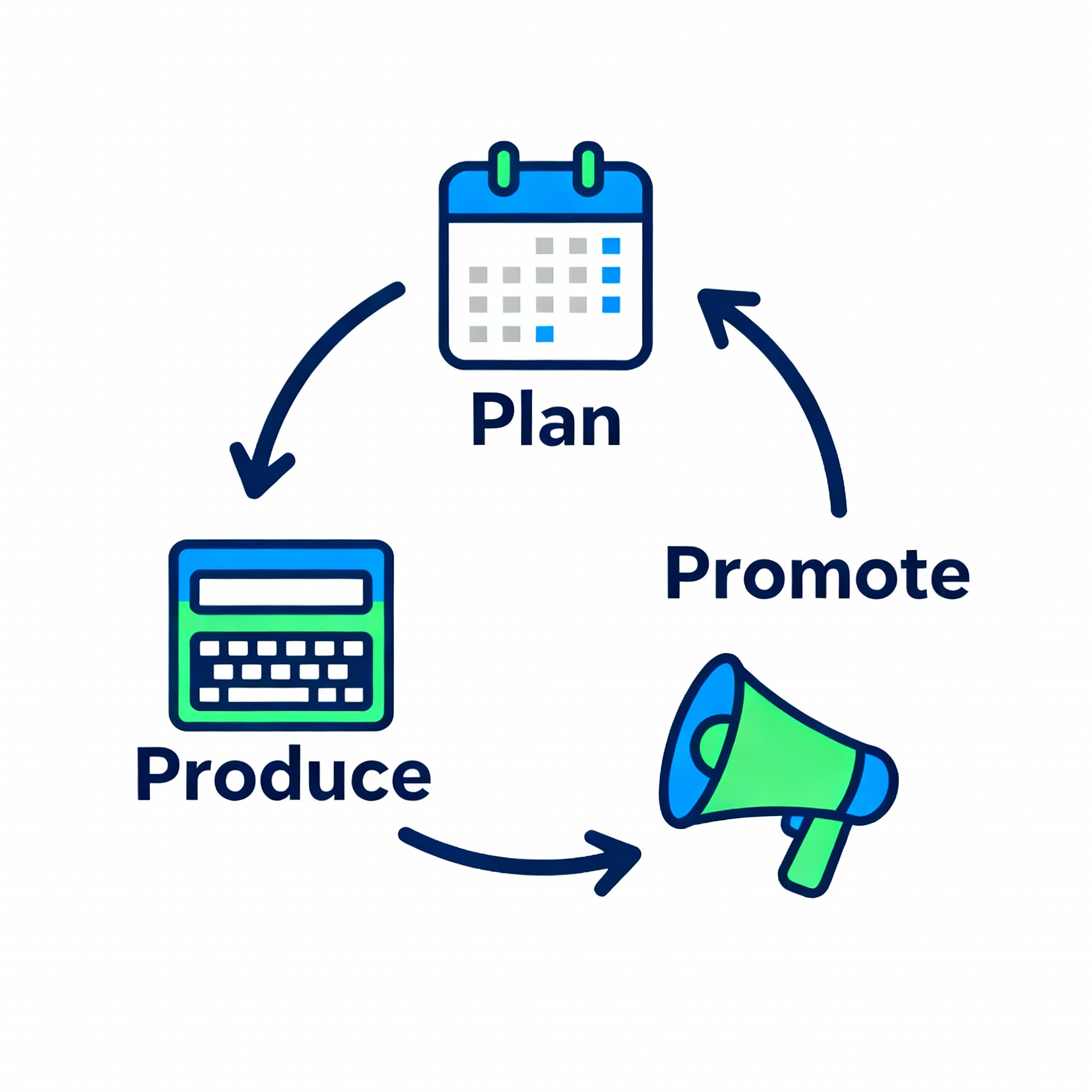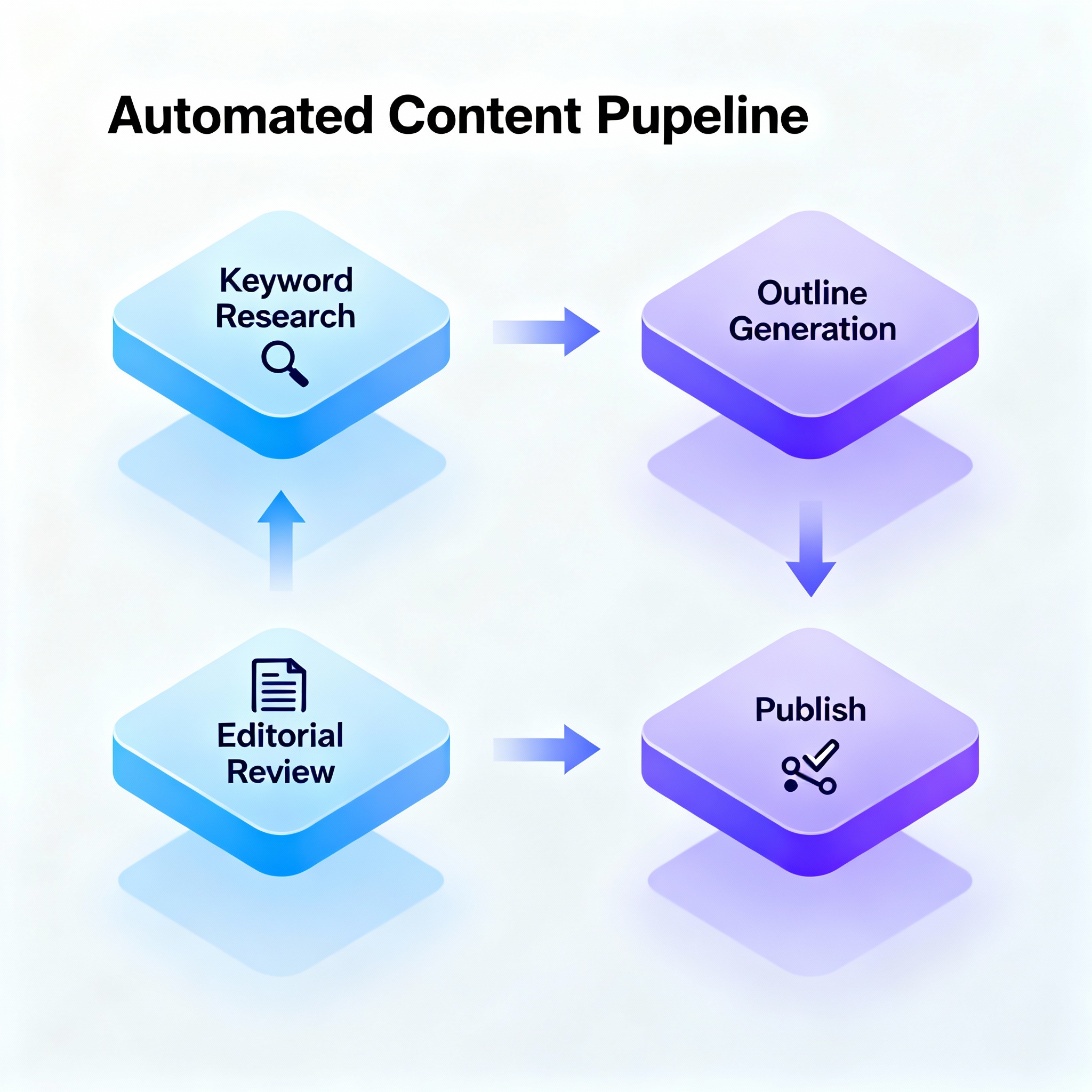Publishing consistently is one of those marketing truths everyone repeats, until your team is exhausted and your blog becomes a trainwreck of thin posts and broken links. Website owners, SEO companies, content marketers, and digital marketing agencies know the drill: quantity without systems leads to creative fatigue, missed opportunities, and worse, declining search performance. preventing content burnout in seo starts with replacing hustle with structure, and a few strategic automations help more than you think.

Preventing content burnout in seo: a sustainable framework
Here is the thing, you do not have to churn content daily to win SEO. Google explicitly says automation and AI are allowed when used responsibly, and that quality and user value matter most. See Google Search Central's guidance on generative AI content for specifics. Use that as your north star when designing processes so automation helps rather than harms your rankings and reputation.
Why burnout matters for SEO and business outcomes
- Creativity drops first. Low-energy content reads that way, and engagement falls.
- Quality signals fall, and that affects search visibility over time.
- Team attrition and missed deadlines increase operational costs.
When teams are burned out, publishers may start producing waste content that Google flags as low value. To avoid that, we need strategy, not more output.
Practical systems to prevent burnout and keep SEO strong
1) Clarify purpose and content pillars
Define 3 to 5 content pillars aligned to business goals and audience intent. This reduces decision friction and makes ideation faster.
Action steps:
- Audit top-performing pages and queries, prioritize pillars that drive conversions and organic traffic.
- Create a short playbook for each pillar: formats, target keywords, internal links, CTAs.
Useful reading: Search Engine Land on modern SEO strategy.
2) Batch, template, and reuse
Stop reinventing the wheel for every piece. Batch writing, templated briefs, and modular content blocks are lifesavers.
- Batch topics one or two days per month.
- Use templates for how-tos, case studies, and listicles so production time drops dramatically.
- Repurpose long-form posts into emails, social carousels, and short videos.
Batching reduces context switching and keeps quality consistent.
3) Use AI to accelerate, not replace
AI is great at outlines, summaries, and first drafts. Google notes that AI-assisted content is fine when it adds value and is not used to manipulate rankings. Human editing, E-E-A-T checks, and fact verification remain essential.
Practical uses:
- Generate structured outlines from SERP research.
- Auto-create meta descriptions and A/B test variants.
- Produce multiple headline options and experiment in the CMS.
Reference: Google Search's guidance on using generative AI content.
4) Automate low-value tasks with WordPress tools and integrations
Leverage automation for scheduling, content templates, SEO checks, and editorial workflows, so your team focuses on craft.
- Editorial workflow tools, scheduled publishing, and content staging help maintain quality.
- Integrate keyword research and SERP tracking into editorial briefs to cut research time.
- Use plugins for schema, sitemaps, and image optimization to reduce manual work.
For examples of editorial process thinking, see TopRank Marketing's take on protecting creative teams.

5) Measure fewer, smarter KPIs
Quality beats vanity metrics. Track engagement, time on page for pillar content, conversions, and organic impressions for target keywords. Set quarterly production goals based on impact, not output.
6) Build recovery and rest into the calendar
Plan periodic "light weeks" with evergreen content and repurposing. Encourage teams to take creative days for research and inspiration. Burnout is prevented by design, not by willpower.
Workflow example for a small agency (Day 15 content approach)
- Day 1 to 3: Keyword cluster and pillar selection, automated SERP snapshots.
- Day 4: Outline generation with AI, human review for angle and E-E-A-T notes.
- Day 6: Batch writing session for two articles.
- Day 10: Internal review, fact checks, and schema markup.
- Day 12: Schedule publish and social snippets, staggered promotion across channels.
- Day 15: Measure early signals and adjust promotions.
This cadence gives breathing room and predictable output without sprinting every week.
How to gain more visibility in AI-driven search and AEO
Answer Engine Optimization, or AEO, rewards clear answers to user intents. Structure content to own featured snippets, Q and A blocks, and concise guidance. Use structured data and concise, authoritative paragraphs to feed both classic search and newer AI features. For more on these trends, consult recent SEO industry coverage and experiment with structured Q and A sections on high-value pages.
FAQ
Q: How fast can automations reduce workload without hurting quality?
A: Teams often see measurable time savings in 4 to 8 weeks after implementing batching and simple automation for research and scheduling. Start small and measure quality metrics alongside time saved.
Q: Will Google penalize AI-assisted content?
A: Not automatically. Google focuses on value and intent. Use AI to assist the human author, keep accuracy high, and be transparent when it makes sense. See Google Search Central for guidance.
Q: What are simple tools to start automating on WordPress?
A: Begin with editorial calendar plugins, structured data plugins, and SEO tools that integrate with your CMS. Then add workflow and scheduling tools. Prioritize tools that save time on repetitive tasks.
Q: My small team has no budget for tools. What should we do first?
A: Cut the calendar back to a sustainable cadence, batch content, and repurpose your best posts. Use free or low-cost keyword research tools and prioritize quality over quantity.
Q: How do we measure if burnout prevention is working?
A: Track qualitative signals such as team sentiment and churn, and quantitative signals like time-to-publish, content engagement, and retention of top pages. Improvements in both areas indicate success.
Take the next step to scale content without the grind
If you want to automate research, outlines, and publishing while keeping human oversight where it matters, consider tooling that connects keyword research, editorial workflows, and publishing. Explore how automation can free your team to do higher impact work at https://marvlus.ai. Try a focused pilot on 2 pillar topics and measure both quality and time savings.
Conclusion
Preventing content burnout in SEO is not about working harder. It is about working smarter. Focus on pillars, batch work, use AI where it amplifies skilled editors, and automate the boring parts. Do that and your team will create better content more consistently, search engines will reward quality, and you will keep the creative energy that makes content memorable. Go slow to scale fast.

